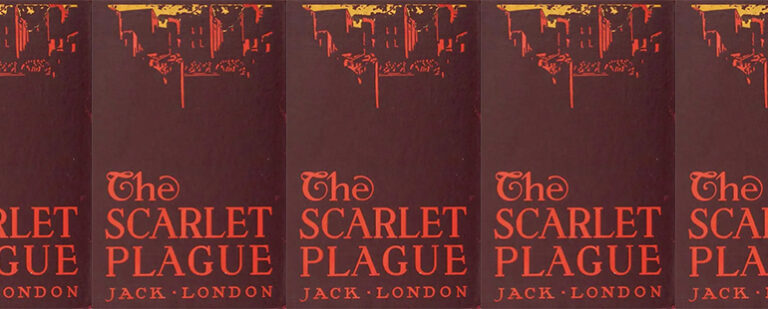Cruelty’s Resonant Line

Ai’s first book of poems, Cruelty, published in 1970, consists of a series of dramatic monologues with intense and taboo subject matter—the type of poetry for which she would become famous. Cruelty’s personas embody the book’s titular theme, describing cruelty and people who perpetuate it in what sometimes sounds like level-headed confessions. In “One Man Down,” for example, one of these personas shares: “Your brother brings you home from hunting, / slung over your horse, dead, / with the wild boar tied down beside you. / I ask no questions.” These complex depictions of contradictory emotions, desperation, character triangles, and speakers driven to and past the brink of perpetuating harm work because she employs minimalism in her poetic devices, including heavy use of the end-stopped line.
Many writers have focused on why cruelty happens, and that is a worthwhile question, but Ai’s debut collection is more preoccupied with what cruelty is—it forces readers face-to-face with what we might rather turn away from. This strategy of narrowing focus involves a different logic of lineation, one in which less is more. Poems that address the why may make use of line breaks complicated by enjambment and other devices to plant thick subtext and hidden meanings—and one could argue that substantial reliance on enjambment creates the danger of over-intellectualization in addition to aesthetic complication. Reduced enjambment and more end-stops keep readers from wandering into the far reaches of the words being used. Instead, we stay close to the intensity of the story.
There is very little enjambment anywhere in Ai’s book. Her frequent use of lines that end with periods propels the drama in these dramatic monologues, like in the poem quoted above, “One Man Down,” in which the speaker goes on to later say: “I scratch the flesh above me. / The odor of fresh meat / digs a finger in my nostrils. / The horse rears, / your body slides from the black saddle / like a bedroll of fine velvet. / I laugh, close my eyes, and relax.” Of course, the incisive images stand out immediately: the black saddle, the dead body as a velvet bedroll, the odor of fresh meat. Looking more closely, we see that four out of seven of the lines in this stanza are end-stopped—more than half. The lineation of this poem follows the language’s syntax through end-stopping instead of working against it through enjambment; Ai has directed our attention intentionally to the chilling images of the character triangle (the dead man, the dead man’s brother, and the speaker), an illuminated hyper-focus on the physicality of image, instead of how she’s rearranged words on the page. Though there are several ways to “read into” this poem’s subtext, and Ai does create suspense through enjambment as the body falls in the penultimate sentence, the end-stopped lines evoke a finality, the sense that each time a line ends, there’s no turning back.
Ai achieves a bold progression into danger through frequent use of a certain kind of end-stopped line, what I call the “resonant line,” or a line composed of a complete sentence. Like Ai’s speakers, the resonant line is independently assertive, unabashed, and maybe even proud. Consider these poetic openings from Cruelty, all of them first lines and all of them resonant lines, each composed of a complete sentence and nothing else. One spotlight, one voice:
“I bend over the woman.”
“So I have killed my black goat.”
“What could I do with a man?—”
“I set the bowl of raw vegetables on the table.”
It isn’t unusual for any poem to say, “I am here” by setting up place and scene. And as in many poems out there, these opening lines are syntactically conventional and each contains an interaction (the speaker and the woman, the speaker and the goat, etc.). So how do they command our attention so grandly? They each end with a period. We stop, for a moment, just as we’re getting started. These opening resonant lines assert that something substantial is about to happen—not just that the poem has arrived, but that the subject matter is about to be as heavy as the stops themselves.
The power of Ai’s end-stopped and resonant lines is even more evident when looking at several lines linked together. Here’s the second and final stanza from “Starvation” where the speaker’s partner has spent money on a glass pane for a household window even as they are starving. Notice how many lines end with a period, or, as in the second line, are composed of syntax that could be a complete sentence (accompanied by an implied period, perhaps):
There’s a pot of air on the stove.
You drove seventy miles, paid for that glass
and I can’t remember the last good meal I had,
but bring it up here. I’ll help you. I’m not angry.
We’ll paint the sun on it from the inside,
so if we die some night, a light will still be on.
It’s hell to starve in the dark.
I don’t know why. I’m just your woman,
like you, crazy to lose all I’ve got.
It’s rotten, you know, rotten.
The table’s set. What time is it?
Wash your hands first. You’re late.
An amazing eight lines in this twelve-line stanza are end-stopped. The last two lines of the poem contain four sentences total. These pauses ask us to read into each word and the speaker’s processing of cruelty, the pain and complication of care, and its absence and misinterpretation.
In prose, as in poetry, a period represents a pause and an ending. In poetry, lineation and punctuation play off one another and can be substituted and switched out to create a particular effect. In The Art of the Poetic Line (2007), James Longenbach introduces a paradigm for understanding lineation by naming three kinds of lines: parsed, annotated, and end-stopped. Annotated lines end (break) against the grain of the syntax, creating new meaning through their enjambment. Parsed lines end at the same time a unit of syntax ends. End-stopped lines end, of course, when a sentence ends. An end-stopped line is a bold move, a doubly reinforced pause—line break and period show up together and play the same role. When Ai is not end-stopping her lines in Cruelty, she is usually parsing them, letting the line endings reinforce where verbal language already turns. Cruelty‘s lines tend to follow the contours of language, allowing line breaks to enhance and deepen the existing punctuation. Syntactical disruption would be a distraction.
In “The Corpse Hauler’s Elegy,” for instance, the speaker says, “Beside the river, I stop the wagon, / loaded with the plague dead / and have a drink.” The next four lines, which take us to the end of the poem, are parsed, three of them end-stopped: “I fill my mouth and swallow slowly / then climb back into my seat. / The old horse drops one turd, another. / Corpses, I give you these flowers.” Enjambment, extensive exposition, or other elaborations would divert the reader from the subject at hand—a subject monumental enough to deserve the whole of our attention. Ai’s lineation choice allows readers to bear witness to this intense scene without distraction. If our gut reaction is to avoid cruelty on and off the page, these lineation choices are crucial because they do not allow us to turn away.
Longenbach argues that too many of any one variety of line creates monotony for the reader. I agree that poetry that does not ever break its own pattern can be sing-songy or monotonous, or in the case of an overly-enjambed poem, shows off what the poet can do for the sake of showing off, which is sometimes the point, but not in a persona poem. In persona poetry (depending on the persona, of course), extensive enjambment to create double meanings can make the poet’s hand too conspicuous. A strategic mixture of line endings, according to Longenbach, helps the poet create a layer of pattern and variation. In the stanza from “Starvation” quoted above, the enjambed lines create curiosity and interest—they break the pattern of end-stopped and resonant lines the poem establishes. The way Ai’s speakers tend to share their confession-like stories of cruelty is methodical, the end-stopped patterns they create telling us that their story is something they want us to know. We see their end-stopped lines and understand, despite what we might expect, that they are not trying to avoid the subject.
Ai pushes the end-stopped line to its limit and builds a case for the solidity, authority, and unflinching nature of the resonant line as a perfect vehicle for bringing uncomfortable, shame-associated, or taboo themes into the light. There are a number of syntactically complete resonant lines occurring at the very end of poems in Cruelty:
“Wash your hands first. You’re late.”
“You have it all now, even what was his.”
“Is it hard to remember if he suffered much.”
“Come on, bitch of my love, while it is still easy.”
“I laugh, close my eyes, and relax.”
“Corpses, I give you these flowers.”
“How can I tell her he will never come?”
“He can only hurt me a piece at a time.”
In our reading lives, we encounter many poems that end with a period or question mark, but it is somewhat rarer to find a poem that ends with a resonant line. Ending with a resonant line means that the last line doesn’t simply finish a sentence that started somewhere up the page, but starts and ends a whole sentence on its own. Because the last line of the poem contains a complete sentence, the line above it ended a sentence, too. This declarative, definitive, double-end-stopped poem ending cues us to focus on the emotional tenor of the poems’ final images, many of which don’t even occur in the final lines, but are echoing there. From, seemingly, far behind the scenes, Ai slows down each speaker’s telling through these subtle punctuation choices, divorcing each sentence of any swelling emotion. She goes cold. The speaker is confessing to what is perhaps the worst moment of their life, but even in present tense, there is no rush. Using end-stopped lines, they are calmly taking their time, a subversion when we think about the emotional work required to break a taboo.
Ai knew as early as her first collection that pulling away from elaborate lineation was part of her method for executing perfectly chilling images—doing so would require readers to set our ears on her speakers’ voices, each of whom relays a different example of cruelty. Selecting the heaviest themes possible as subject matter allows Ai to experiment with minimalism: she does not need to use many poetic devices to provoke readers—cruelty has already done so.


